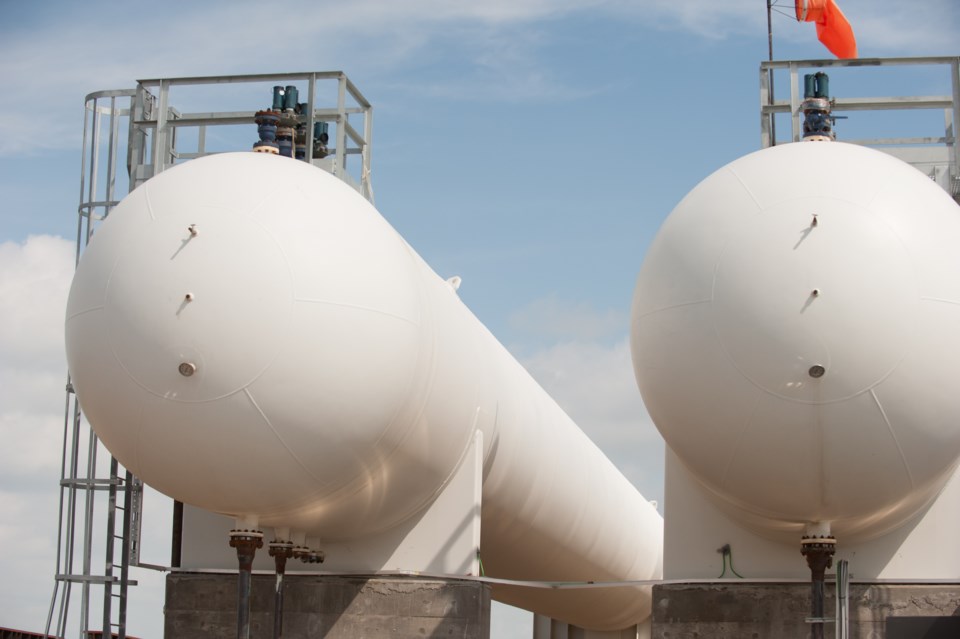While drilling down, as it were, on the numbers in the annual Petroleum Services Association of Canada (PSAC) drilling forecast for 2018, one number leapt out at me: zero.
That big, fat goose egg was sitting in the number of gas wells forecast for Saskatchewan for both the upcoming 2018 and this year.
It’s like realizing someone you knew died, a relative or school teacher, and you didn’t know about it until well after the fact. The Saskatchewan gas drilling business is officially dead. I’ve called it.
A few years ago I had noticed Saskatchewan had drilled around 80 gas wells that year. That was a far, far cry from what we used to drill.
I dug around on the Ministry of Economy website. It showed that we drilled our first gas well in 1933. For the next 40 years, we drilled between a handful and a few dozen per year, slowly ramping up in the late 1960. In 1973 we drilled 114, a big year, as it dropped to 13 by 1982. Two years later, a whopping 419 gas wells were drilled. It fluctuated up and down until 1989, when it hit 931, then bounced up and down to around 179 twice before spiking again in 1999, when 911 wells were drilled. The following 10 years saw over 1,000 wells drilled each year, with 1,801 in 2002, 2,119 in 2003 and 1,734 in 2004. Those were good times if you were a shallow gas driller in southwest Saskatchewan.
At that time, my biggest consideration about natural gas was how much I was paying for it, with monthly equalized bills hitting around $250 per month for our 1100 square foot house. It was getting so expensive, we had to do something. So, with substantial help from a government, we replaced the three (yes, three) furnaces in our house – one for upstairs, one for downstairs, and an overhead one in the garage -with one 97.5 per cent efficient one in the house and a used, but much-better efficiency furnace in the garage. I even wrote a series of news stories which I freelanced to several papers. The interest was high, because gas bills seemed to be choking everyone. I figured, with the grant in hand, the upgrades would pay for themselves in a few years. They did, just in time for us to sell the house.
In October 2005, gas was getting $11.38 per gigajoule, according to records kept by the Alberta government. By September 2007, they had dropped to $4.42 per gigajoule, only to rise to $9.84 per gigajoule in July of 2008.
And that was the end of that. The recession of 2008-09 took gas prices down to $2.48 in September 2009. Since then, natural gas prices have hovered primarily in the $2 to $3 range per gigajoule, very briefly coming up to $5.20 in February 2014, and dropping to as low as 94 cents in May of 2016. The most recent numbers, posted on Daily Oil Bulletin in early November, showed $2.22 per gigajoule.
Basically the last decade saw natural gas, once a hot commodity (in more ways than one), lose nearly all its value. My gas bill this month, for a nearly identical house to the one I upgraded, is an equalized $40 per month, and that includes delivery charges.
When natural gas is nearly worthless, no one is going to drill for it. And thus, an industry has died in Saskatchewan. With no new drilling, our gas production is now largely from associated production from oil wells.
This brings up a few questions. Of those 13,209 gas wells drilled from 1999 to 2008, how many are still producing? How have been abandoned? Do their owners have enough money to abandon thousands of wells as they eventually deplete out? Since natural gas hasn’t been much of a profitable venture in Saskatchewan for the better part of a decade, will anyone have the money for abandonments, or will the orphan well fund be stuck with them, down the road? And if that’s what happens, how will that affect liability ratings for oil drillers, especially the small ones?
The impact on the province’s finances is quite noticeable. In the 2005 provincial budget, Natural gas was estimated to bring in $191.4 million. Now, natural gas doesn’t even get its own line item on the revenue side of the budget. In 2017, it was lumped in with oil revenue. The last time it was its own line item, in 2016, revenue was expected to be $9.5 million. That’s a 95 per cent drop, from 2005 to 2016.
It's dead, Jim.
Brian Zinchuk is editor of Pipeline News. He can be reached at brian.zinchuk@sasktel.net.



